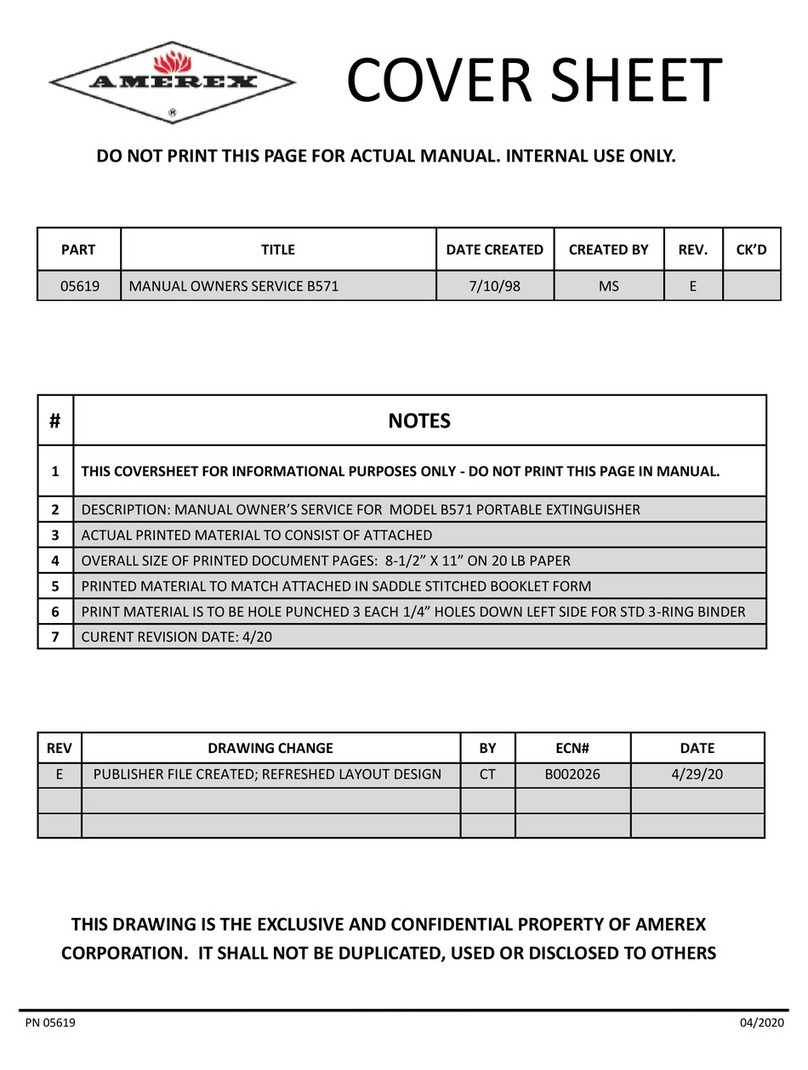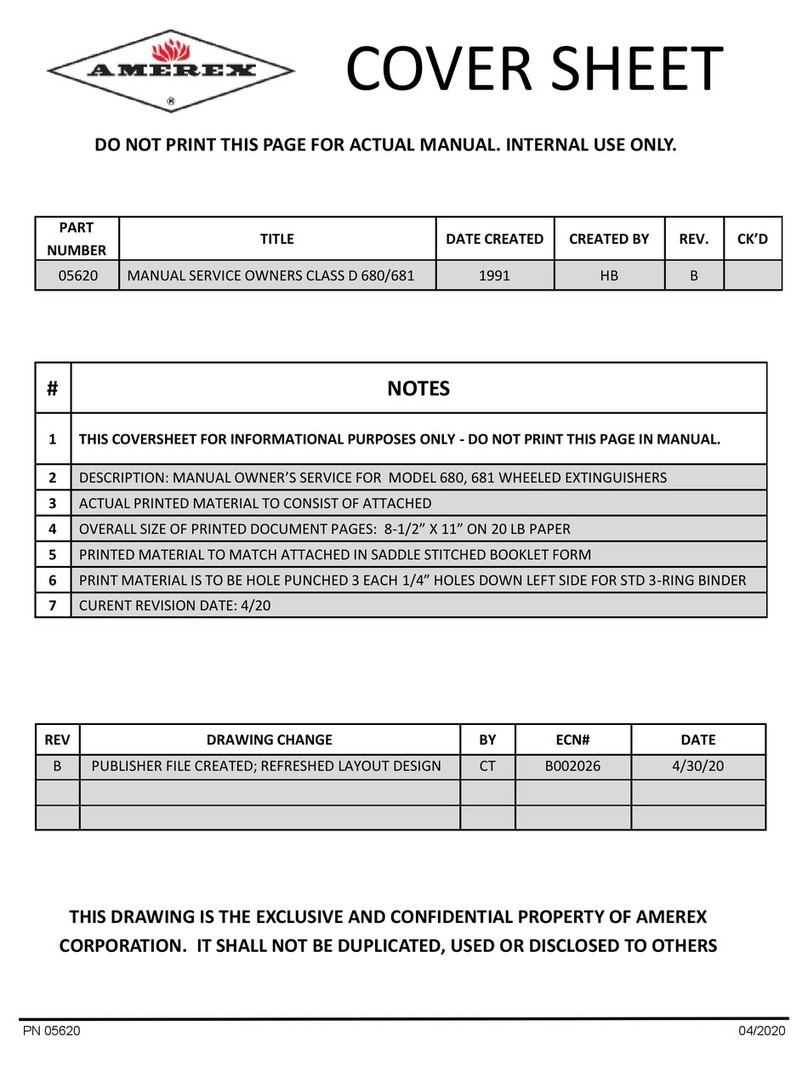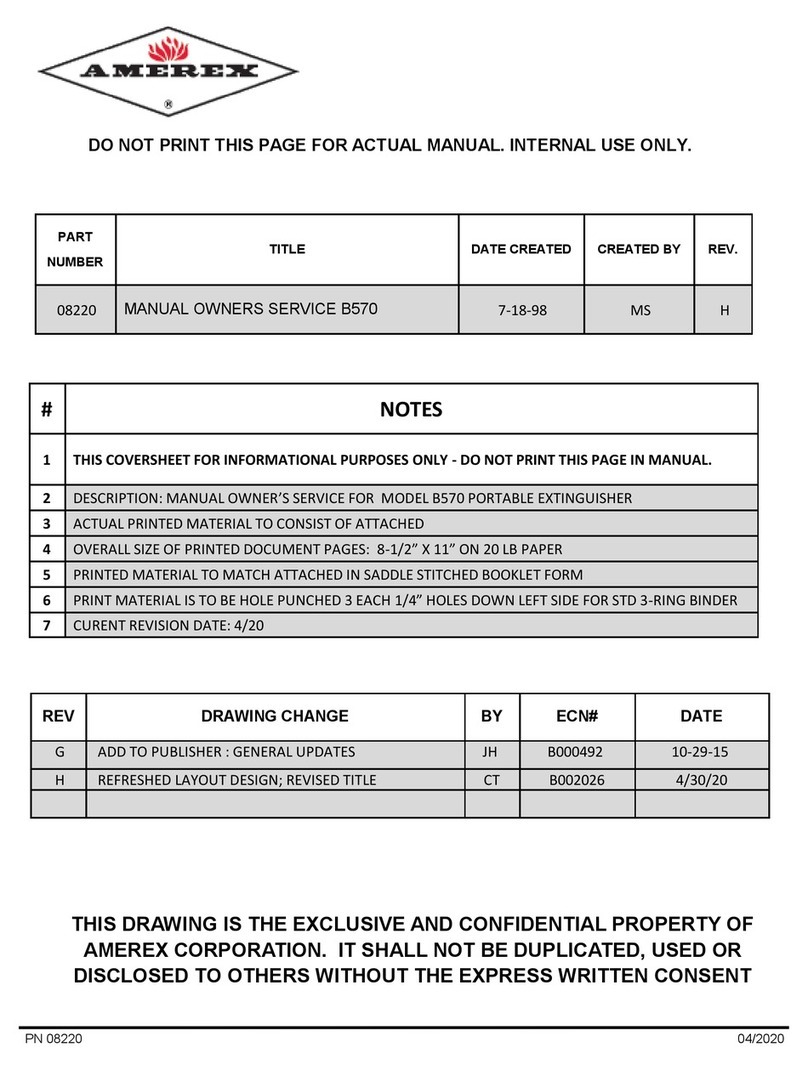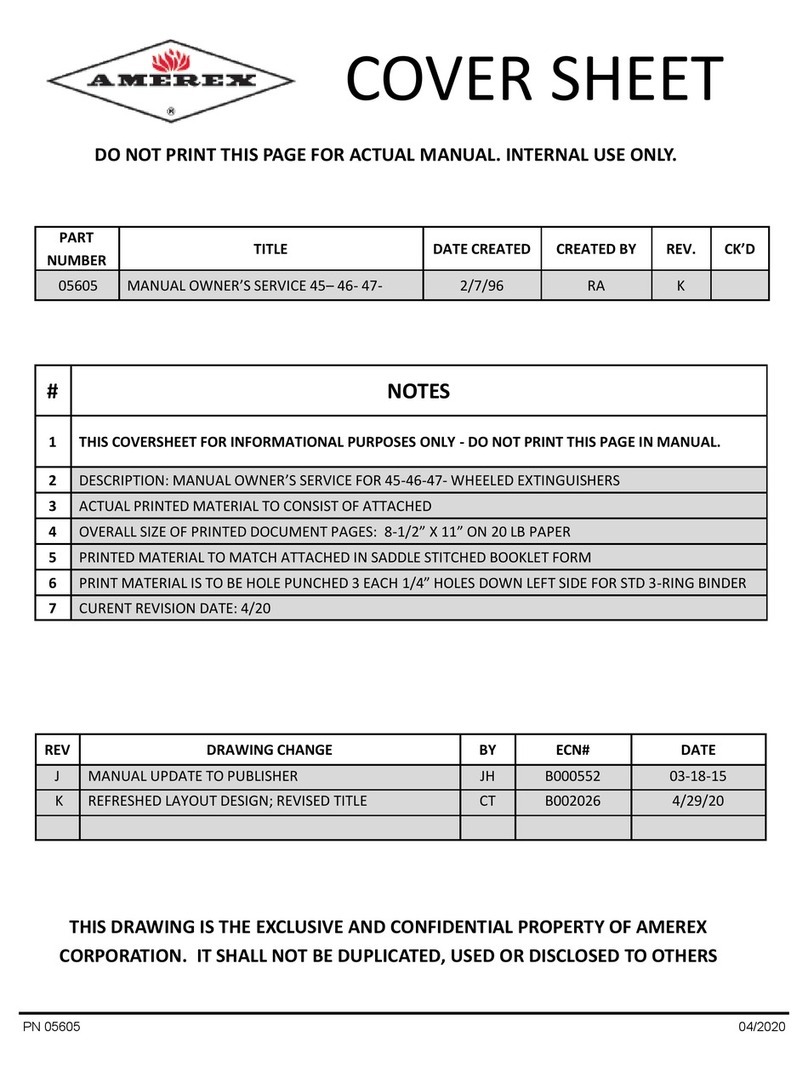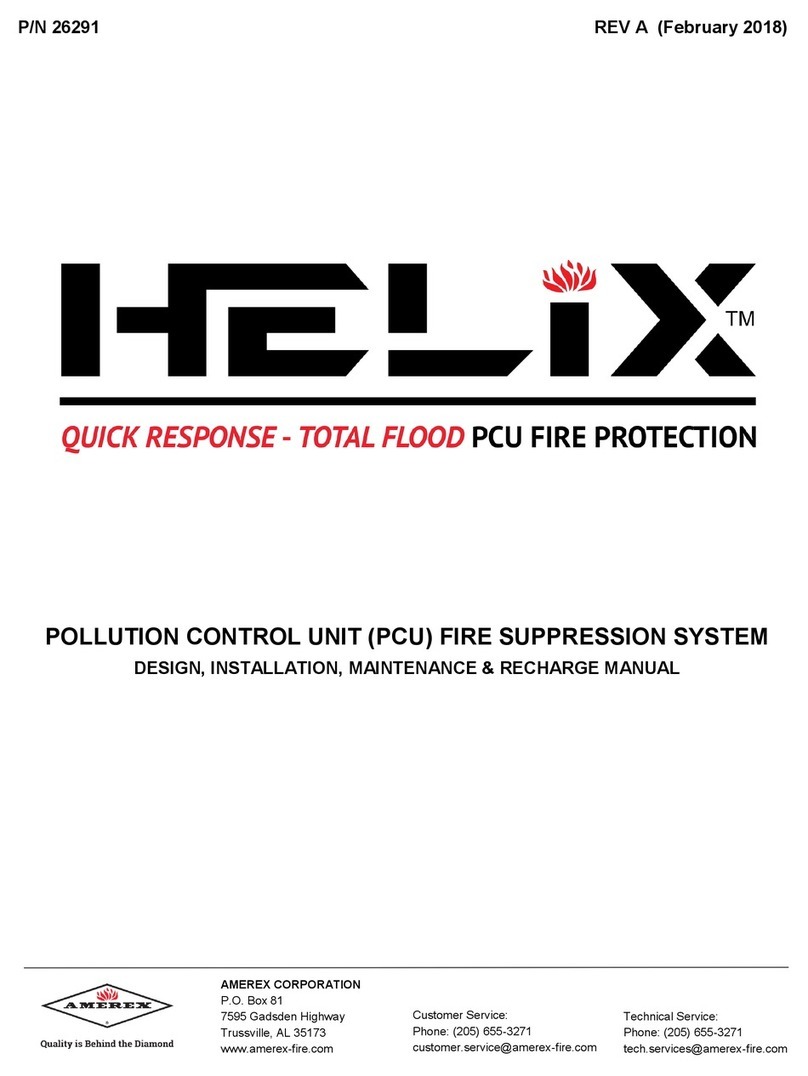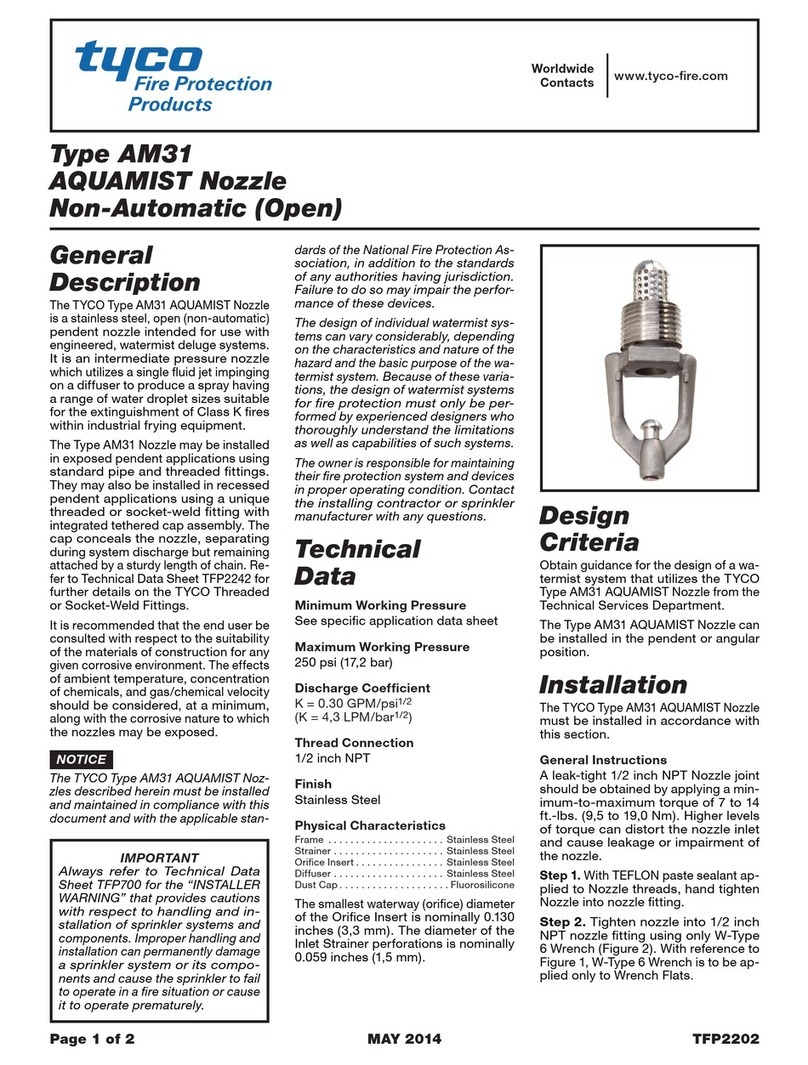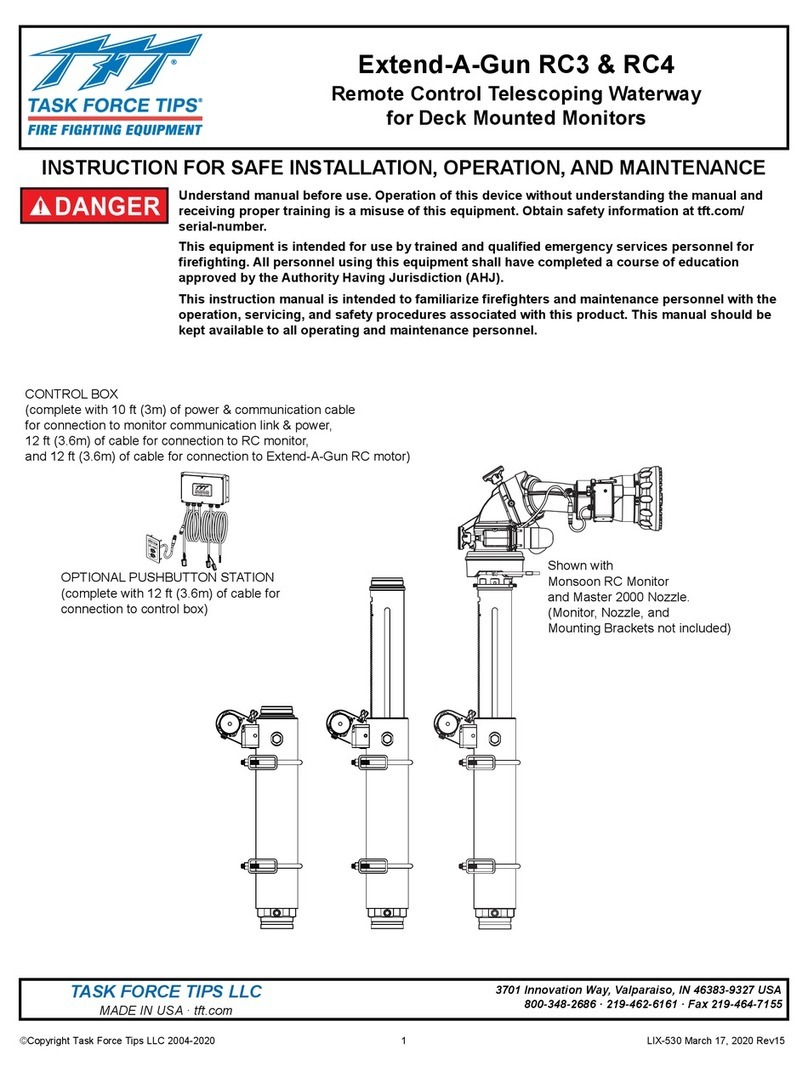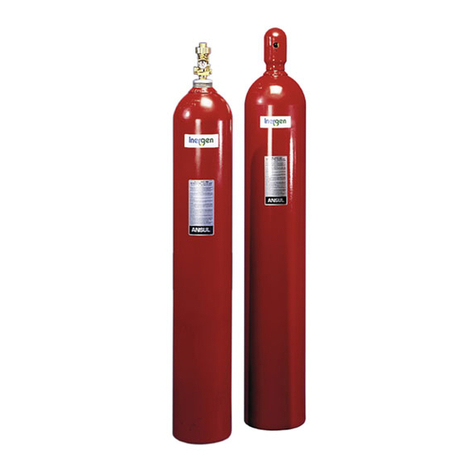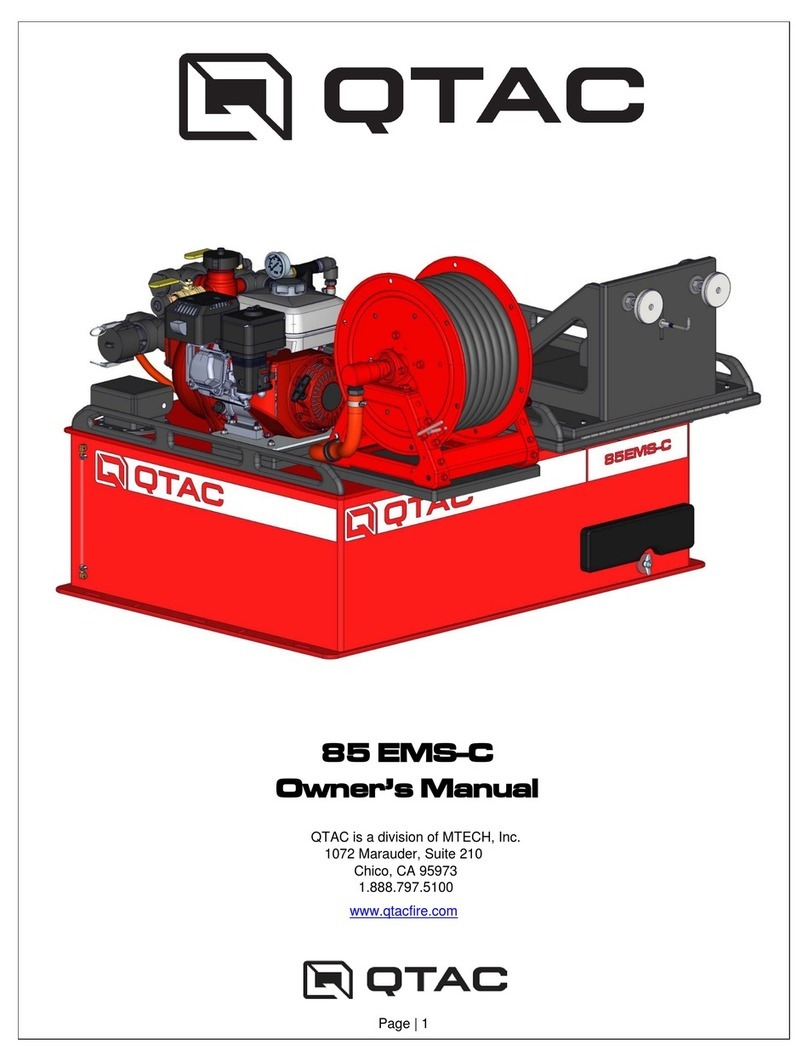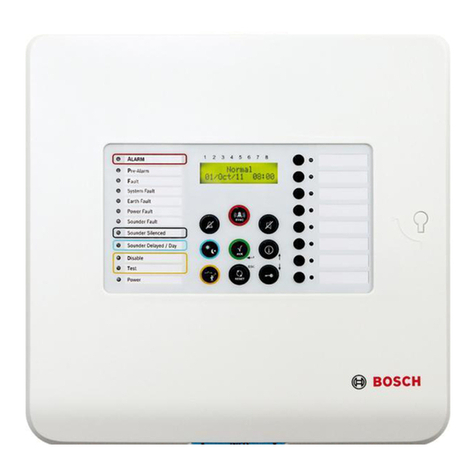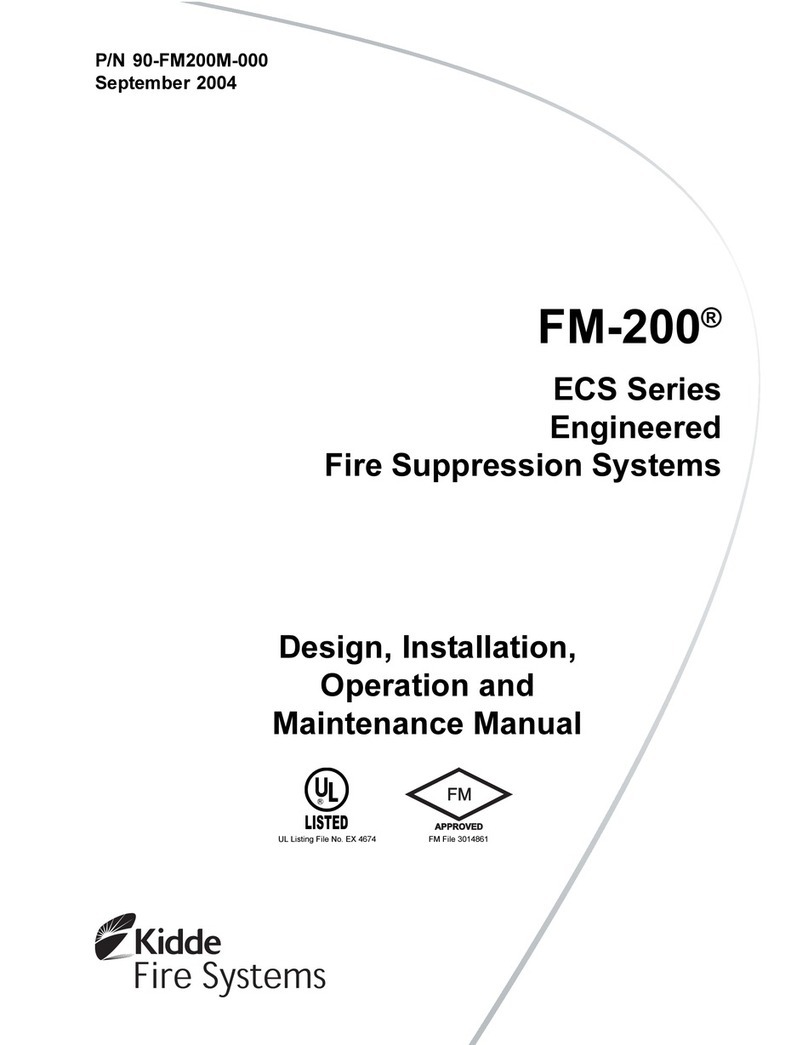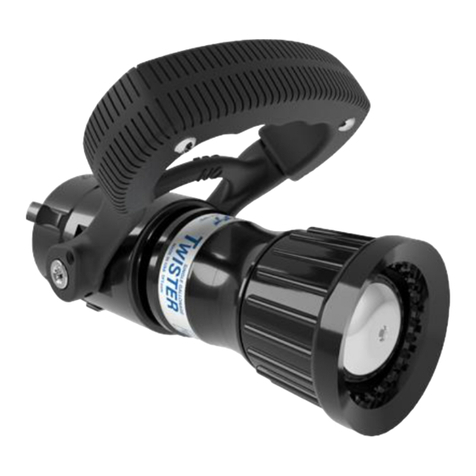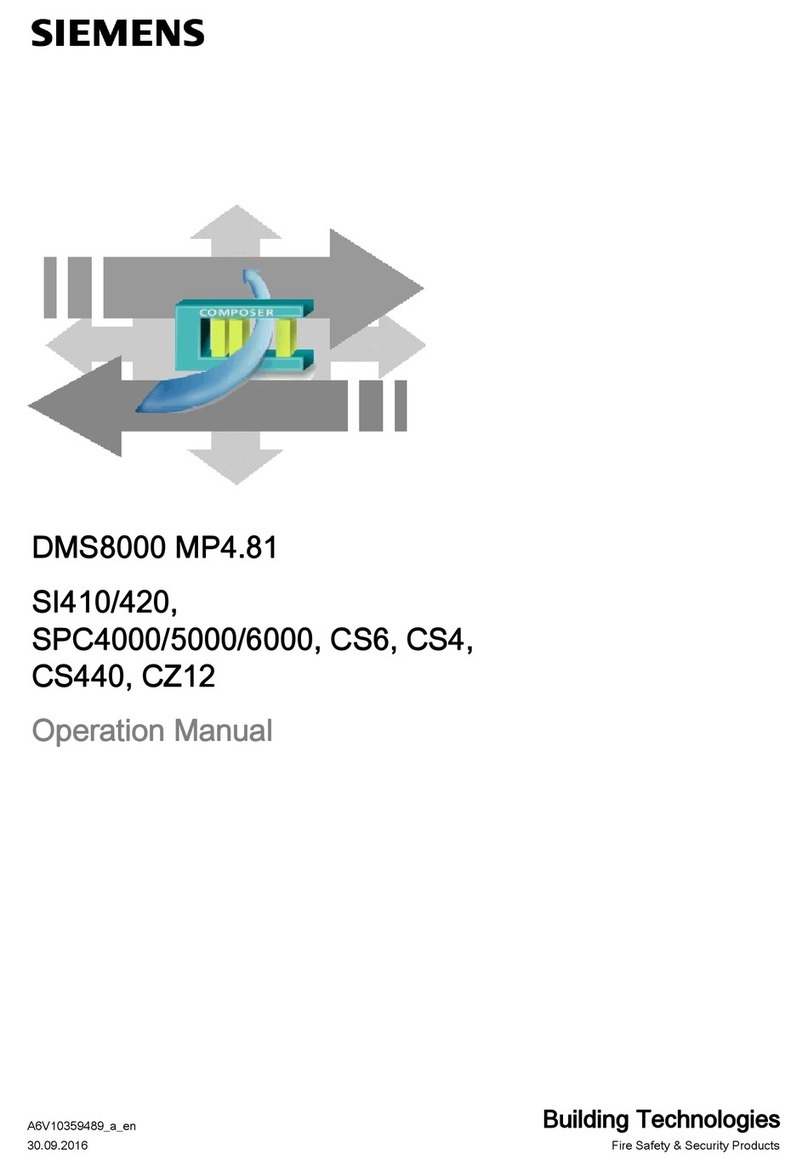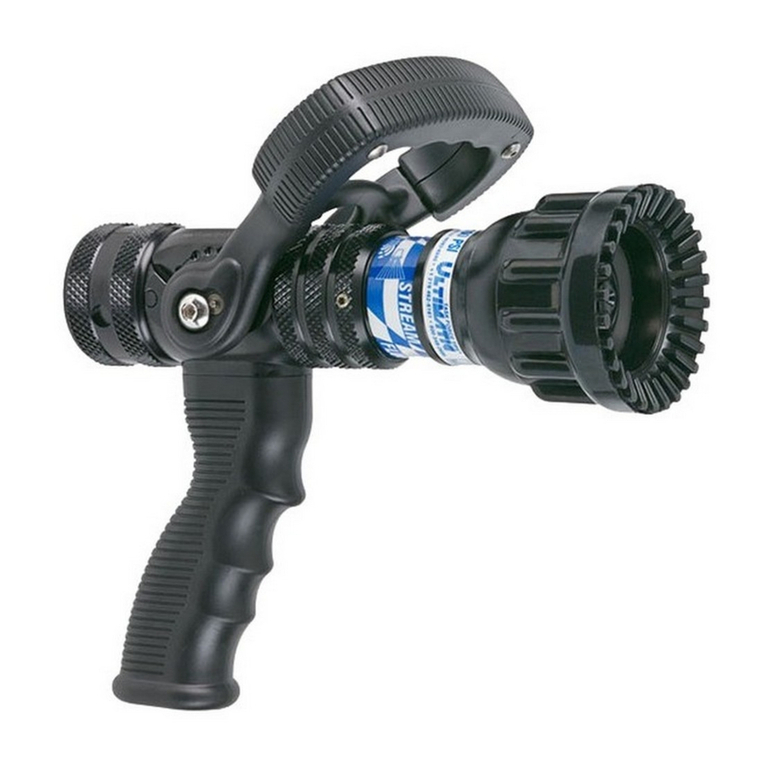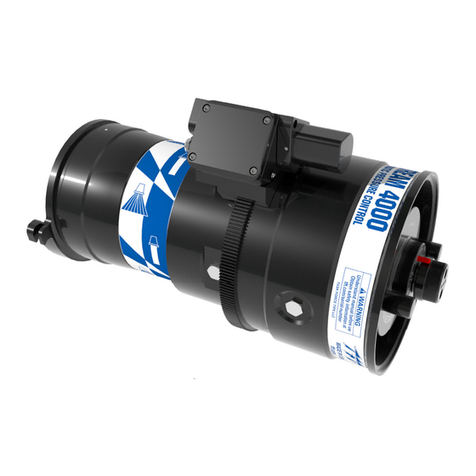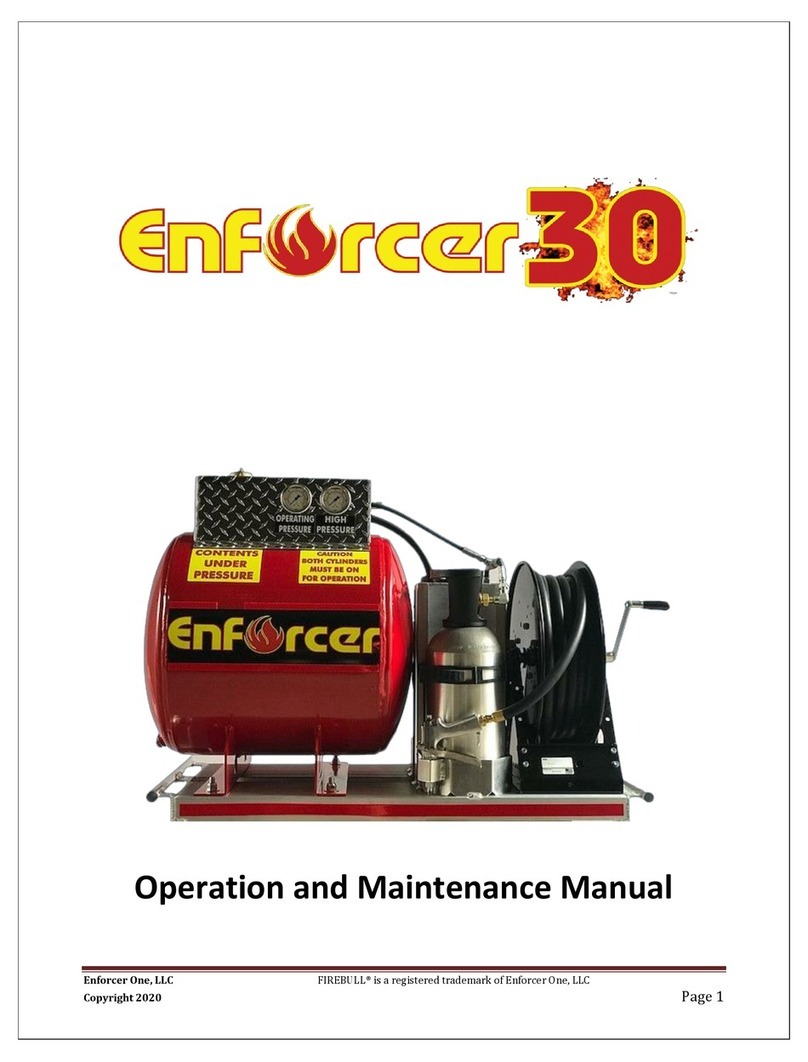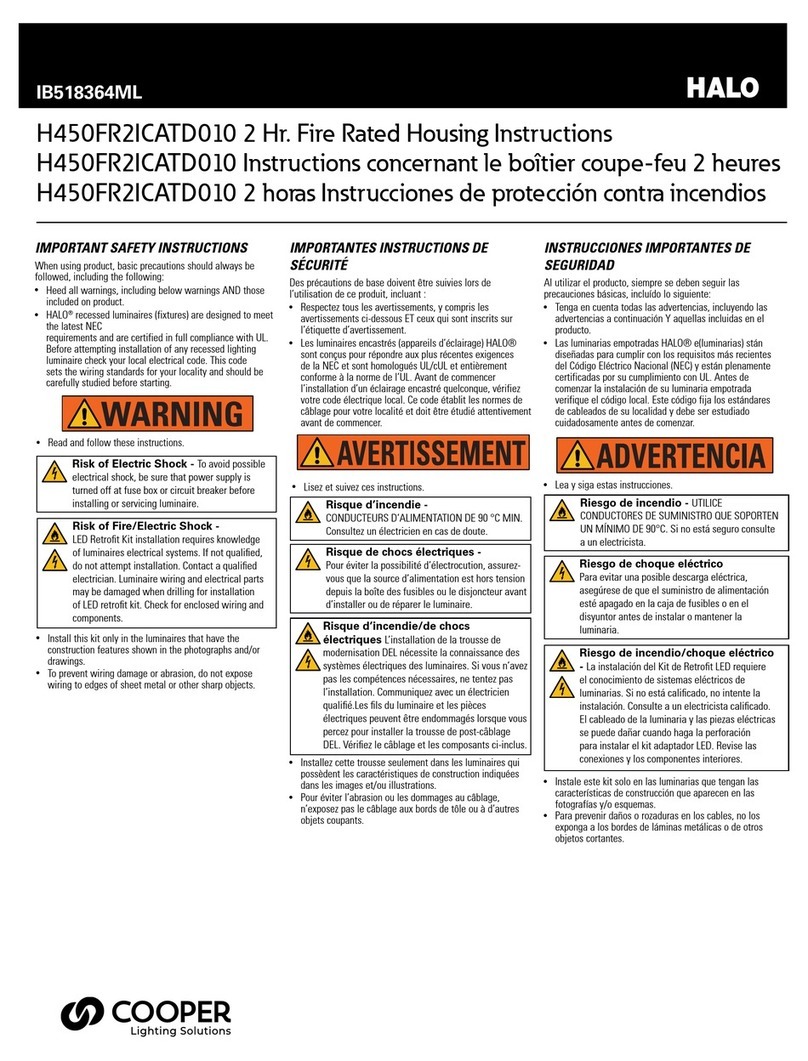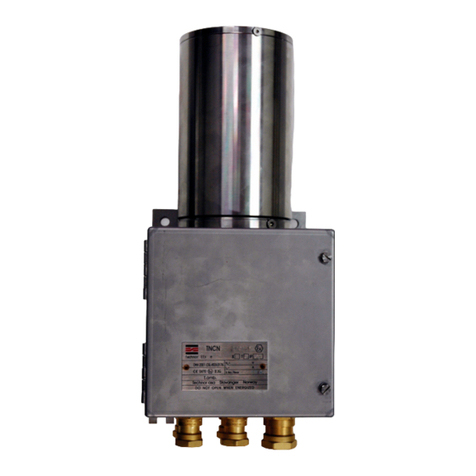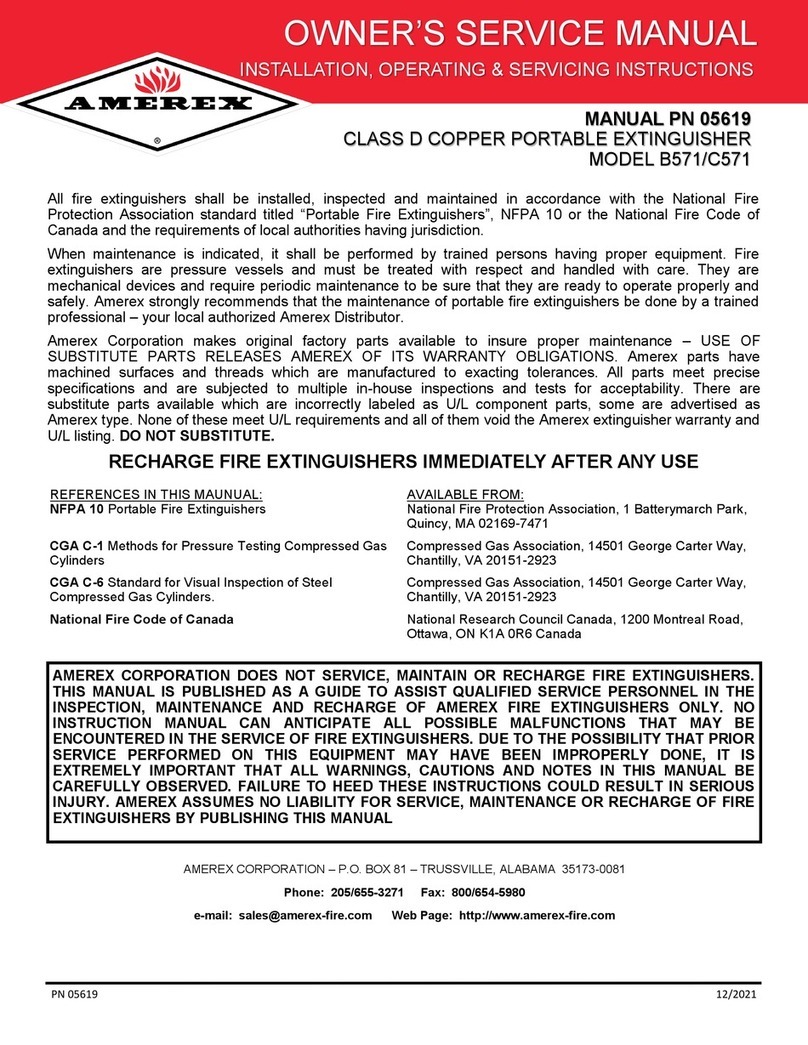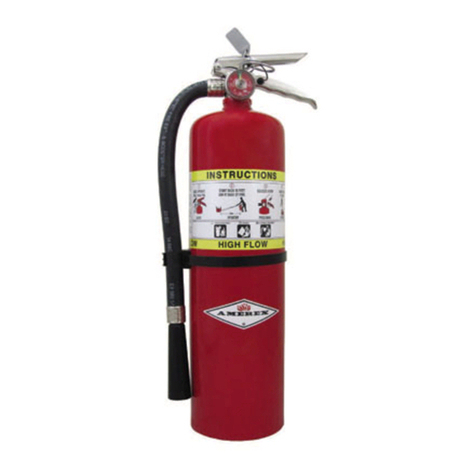
have been shown to reduce equipment loss and equipment downtime, product loss, and most importantly,
human life.
This manual is provided to you, the equipment owner, to explain the basics of the suppression system
components and their operation, and how to use the system in case of a fire. It is imperative that all persons
expected to operate the equipment on which the suppression system is installed read and understand this
manual and become proficient in suppression system use.
WARNING: This is not a Maintanence, Recharge, or Inspection Manual. Your system must be
designed, installed, and maintained by a Factory Trained and Authorized Amerex Industrial Fire
Suppression System Distributor in accordance with the Amerex P/N 15040 “Installation,
Operation, and Maintenance Manual” (available upon request from Amerex Corp.), NFPA 17, and
Local Codes. Failure to do so may result in personal injury and/or property damage.
Documentation such as drawings, permits, and testing by the Local Authority having
Jurisdiction should be in your possession. RETAIN THESE DOCUMENTS FOR FUTURE USE.
In addition, this manual describes the owner's role in suppression system maintenance and in equipment
maintenance that will help to ensure proper fire prevention. This manual is not intended to provide detailed
information concerning suppression system installation or diagnostics. Information of this type is available in
the Service and Installation Manual P/N 15040.
The Amerex limited warranty is stated below. To validate this warranty, THE WARRANTY REGISTRATION
FORM ON LAST PAGE OF THIS MANUAL MUST BE COMPLETED AND RETURNED TO AMEREX
CORPORATION WITHIN 15 DAYS OF SYSTEM INSTALLATION.
Warranty:
Amerex warrants its Industrial Dry Chemical Fire Suppression Systems to be free from defects in material
and workmanship for a period of one (1) year from the date of purchase. During the warranty period, any
defective part will be repaired or replaced (at Amerex option). This warranty is valid only if each system is
installed, serviced, and maintained by an Amerex factory trained Authorized Distributor in strict accordance
with Amerex Manual No. 15040; all work must be performed using genuine Amerex replacement parts. This
Warranty does not cover defects resulting from modification, alteration, misuse, exposure to corrosive
conditions or improper installation or improper maintenance. Warranties on component items not
manufactured by Amerex are provided by others whose warranty, evaluation, and judgement will be final.
ALL IMPLIED WARRANTIES, INCLUDING, BUT NOT LIMITED TO, WARRANTIES OF FITNESS FOR
PURPOSE AND MERCHANTABILITY, ARE LIMITED TO THE TIME PERIOD AS STATED ABOVE. IN NO
EVENT SHALL AMEREX CORP. BE LIABLE FOR INCIDENTAL OR CONSEQUENTIAL DAMAGES.
Some states do not allow limitations on how long an implied warranty lasts or the exclusion or limitation of
incidental or consequential damages, so that the above limitations or exclusions may not apply to you.
Amerex Corp. neither assumes nor authorizes any representative or other person to assume for it any
obligation or liability other than as expressly set forth herein. This Warranty gives you specific legal rights,
and you may also have other rights which vary from state to state. To obtain performance of the obligation of
this Warranty, write to Amerex Corp., P.O. Box 81, Trussville, AL 35173-0081, U.S.A. for instructions.
WHAT IS PROTECTED BY AN INDUSTRIAL FIRE SUPPRESSION SYSTEM? There are relatively few
generic types of dry-chemical fire suppression system applications. They vary from each other in terms of the
nature, NFPA Class designation, and physical layout of the flammable materials involved and whether or not
the area to be protected is enclosed. The main application types covered by the Amerex system are:
LOCAL APPLICATION – OVERHEAD:
This system is used for applying agent to an area from above. Typical applications include dip-tanks, power
generators, and transformers.
LOCAL APPLICATION – TANKSIDE:
This system is used for applying agent across an area from a few inches above the surface. Typical
applications include dip-tanks and quenching tanks.
